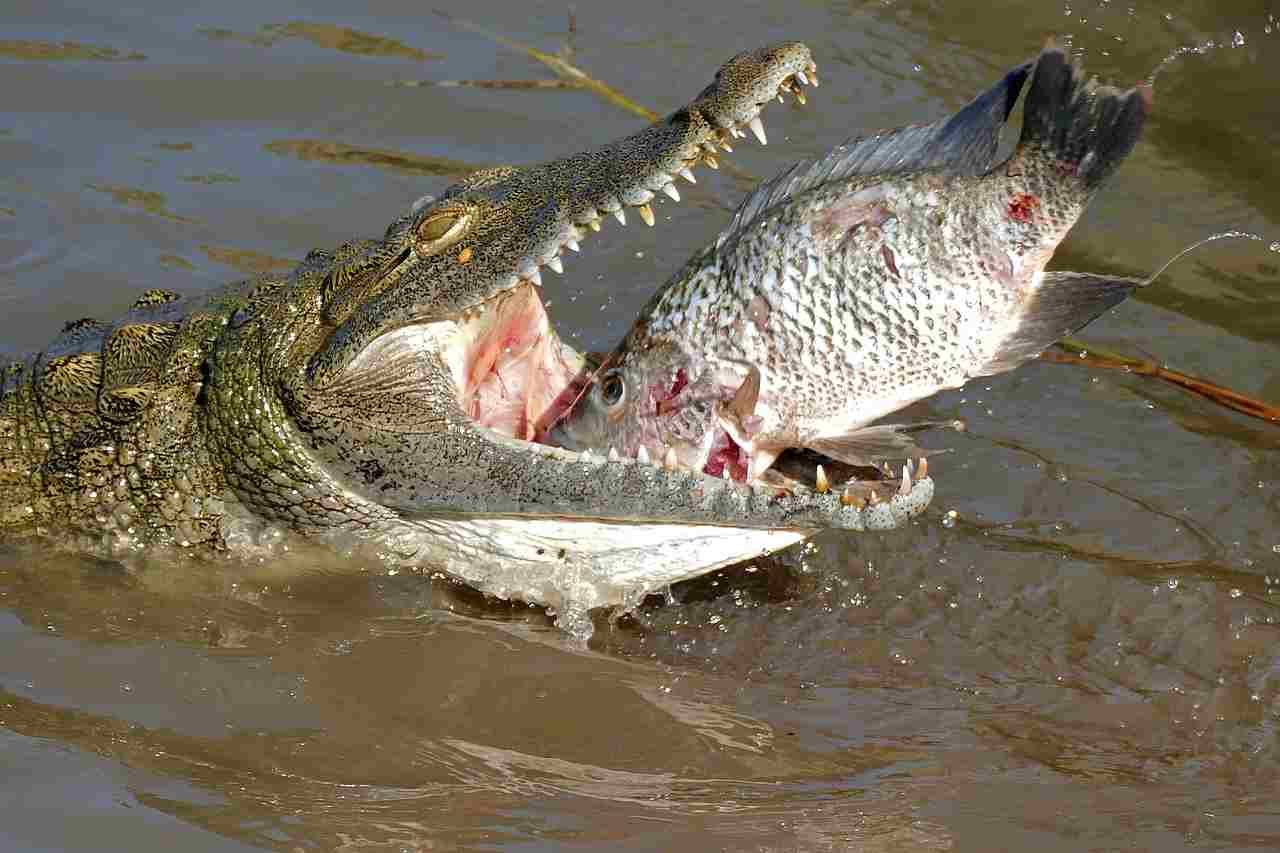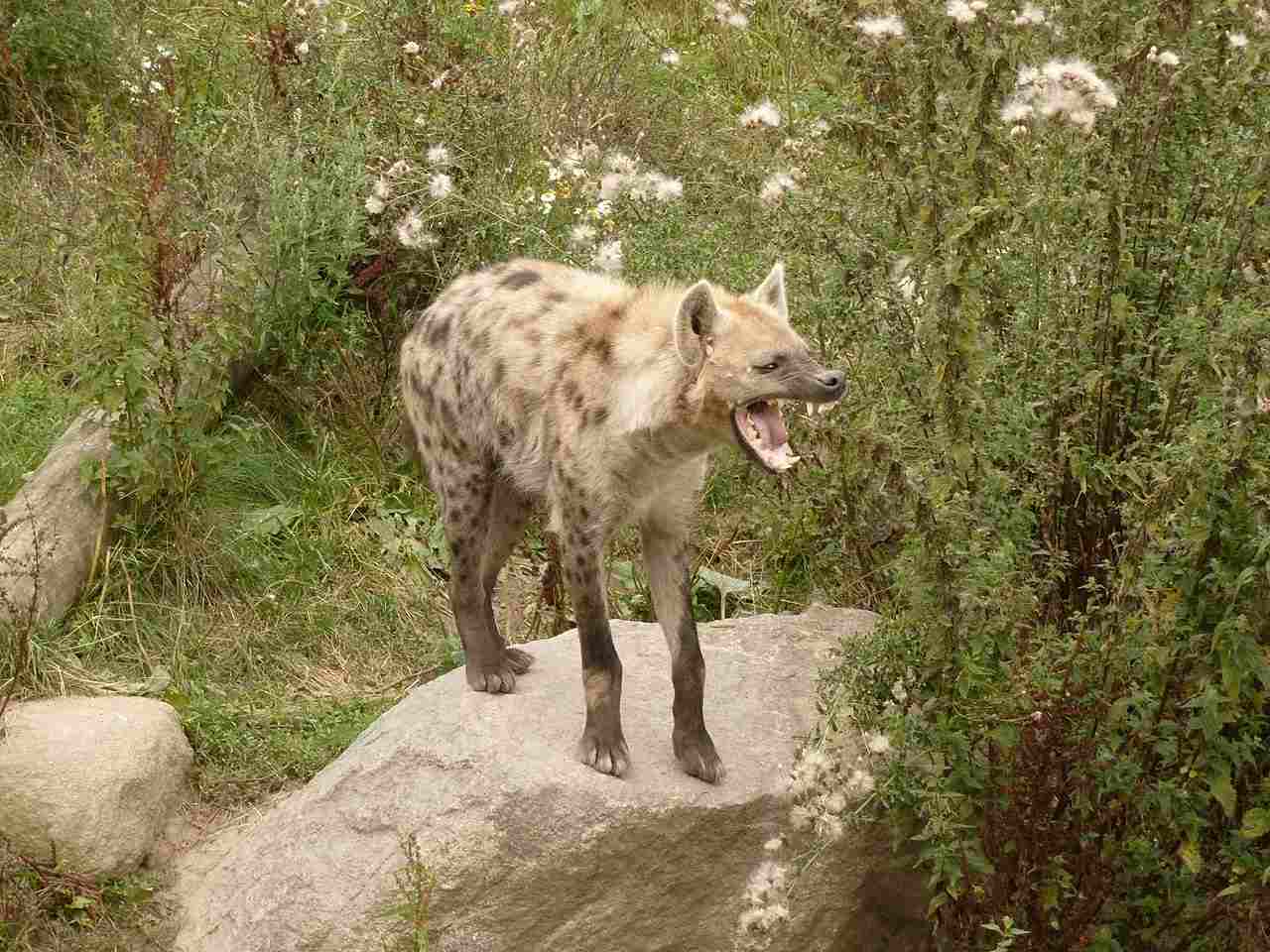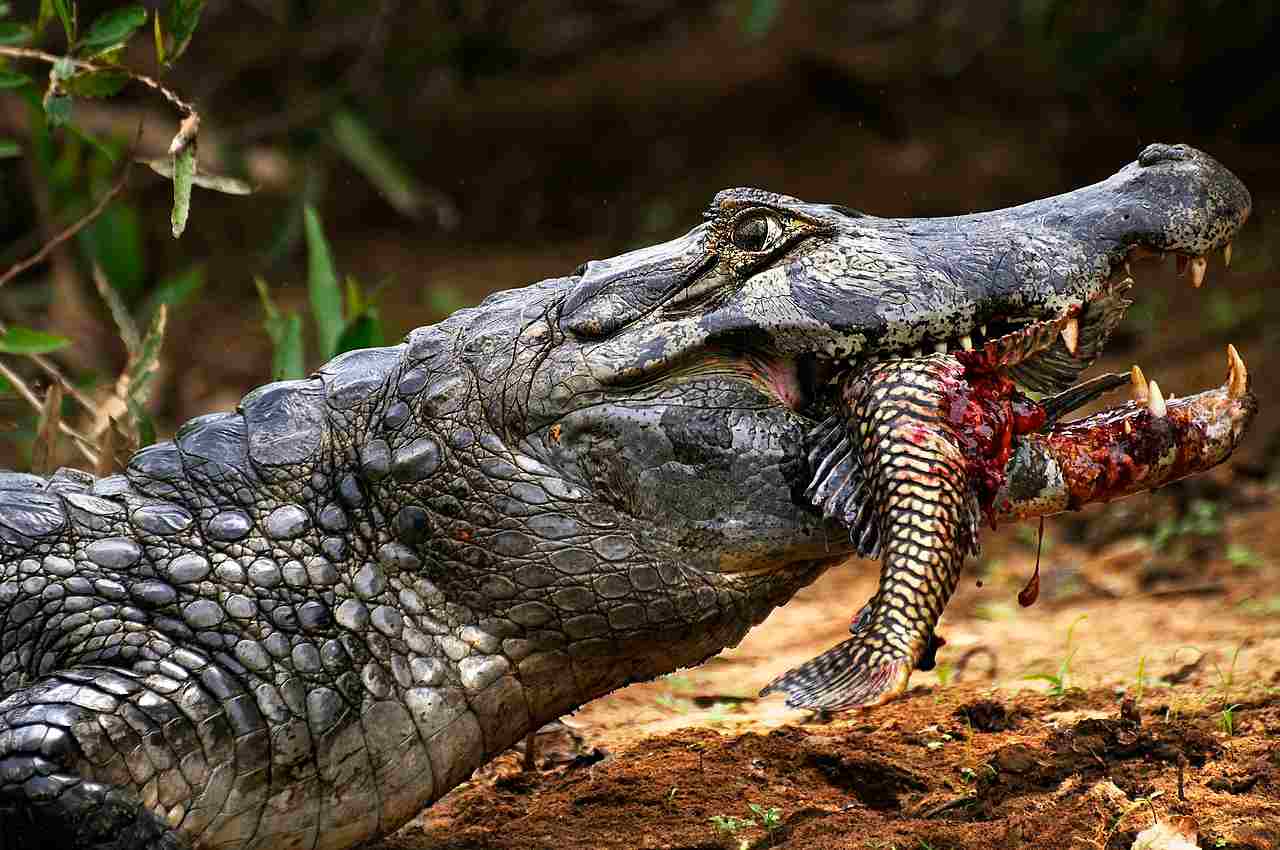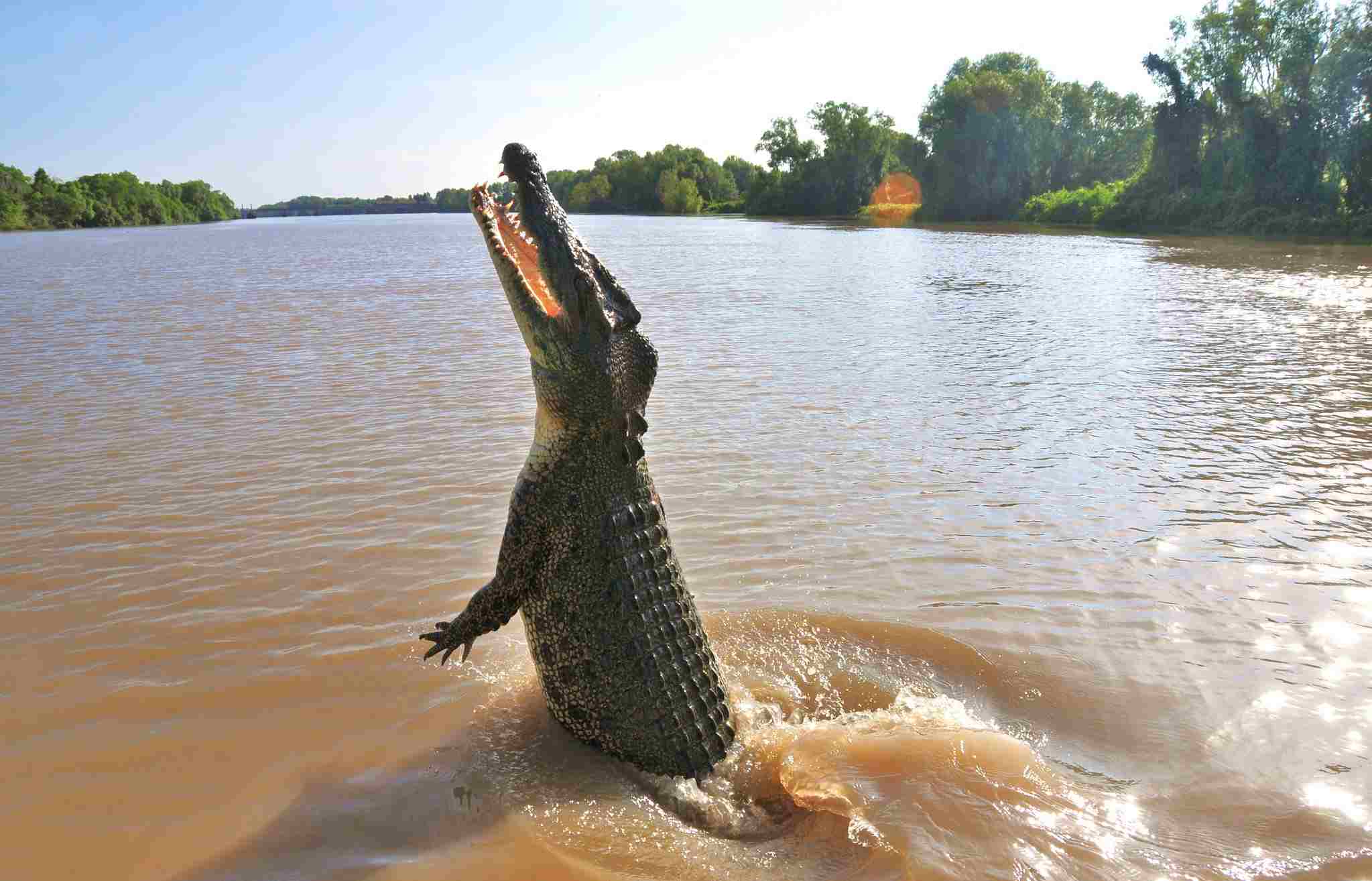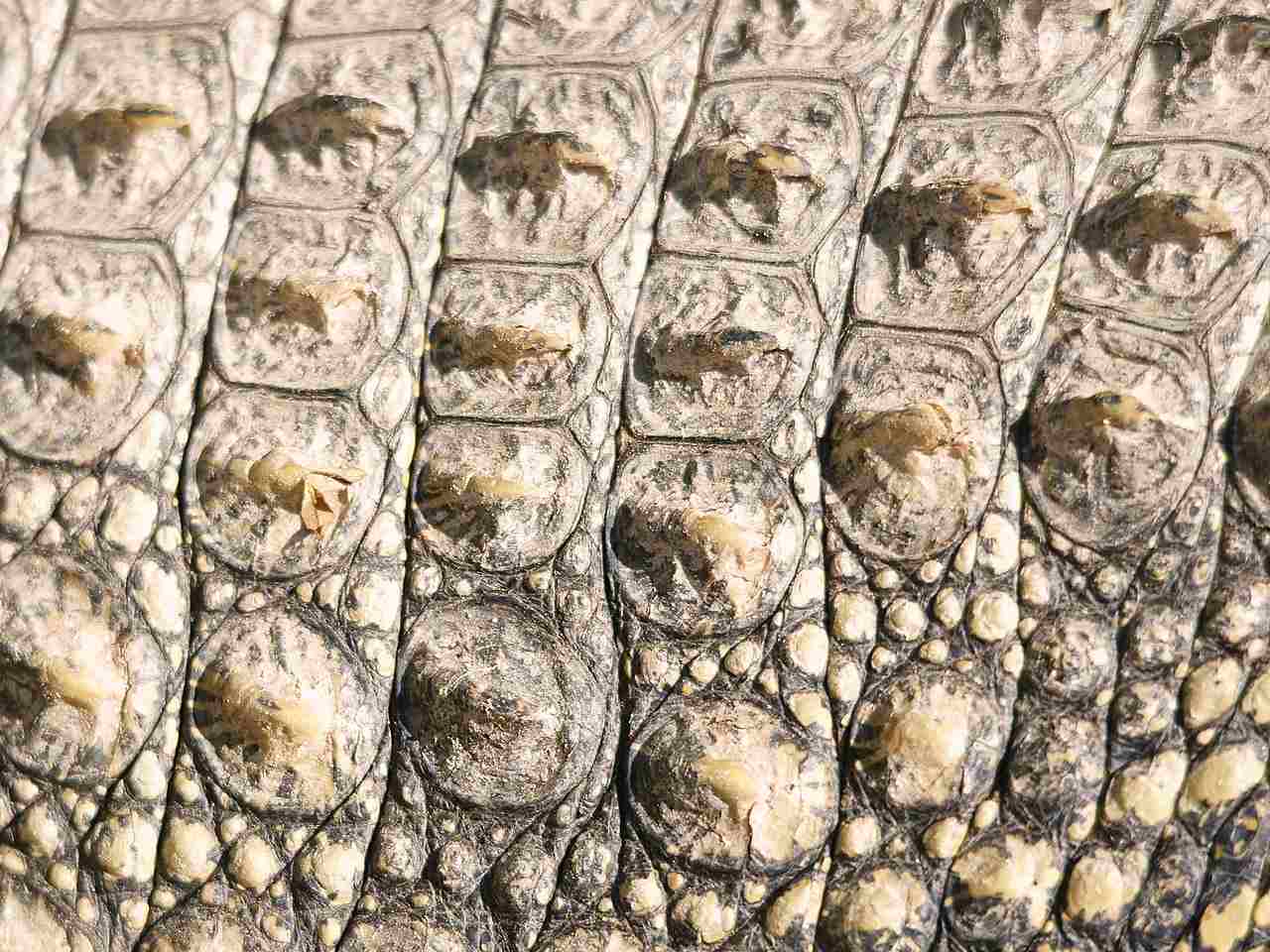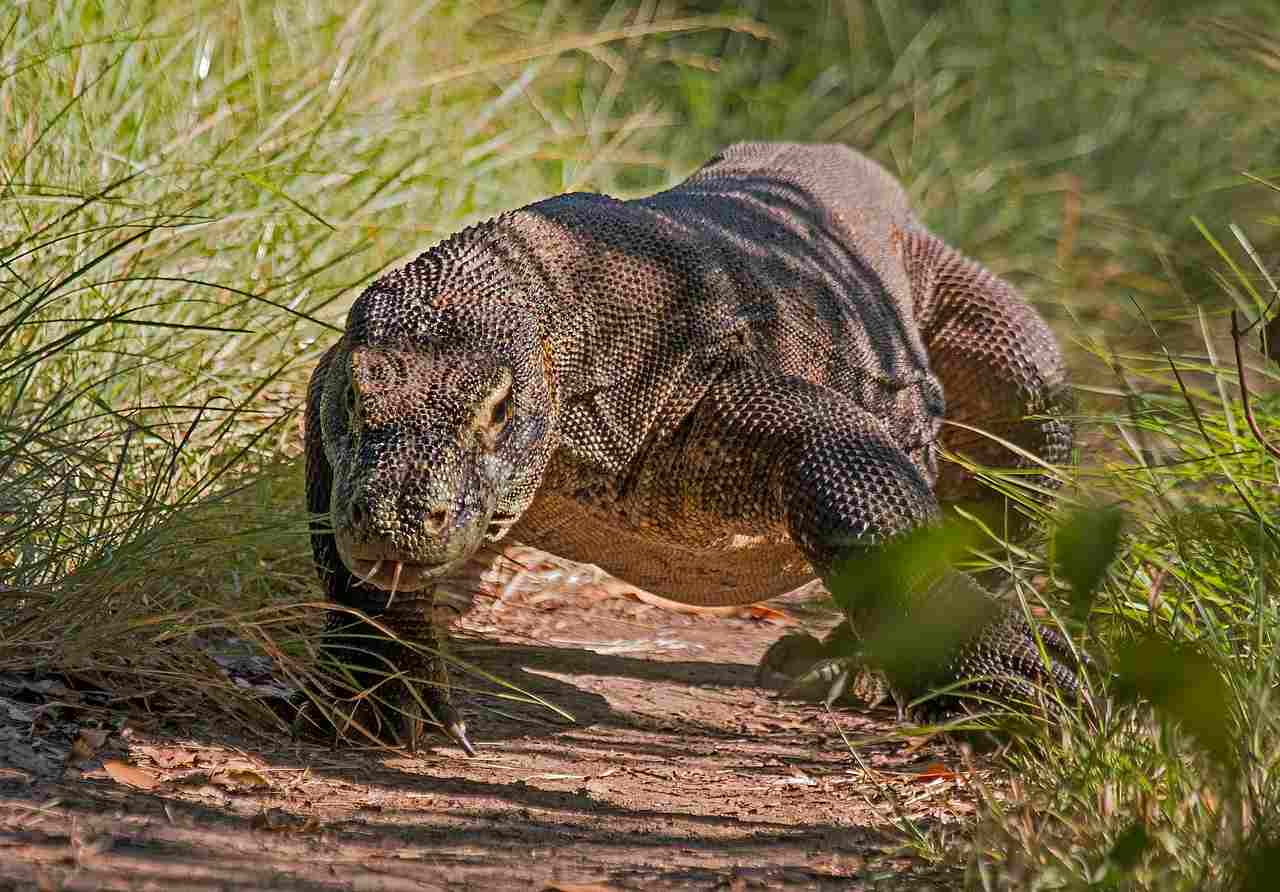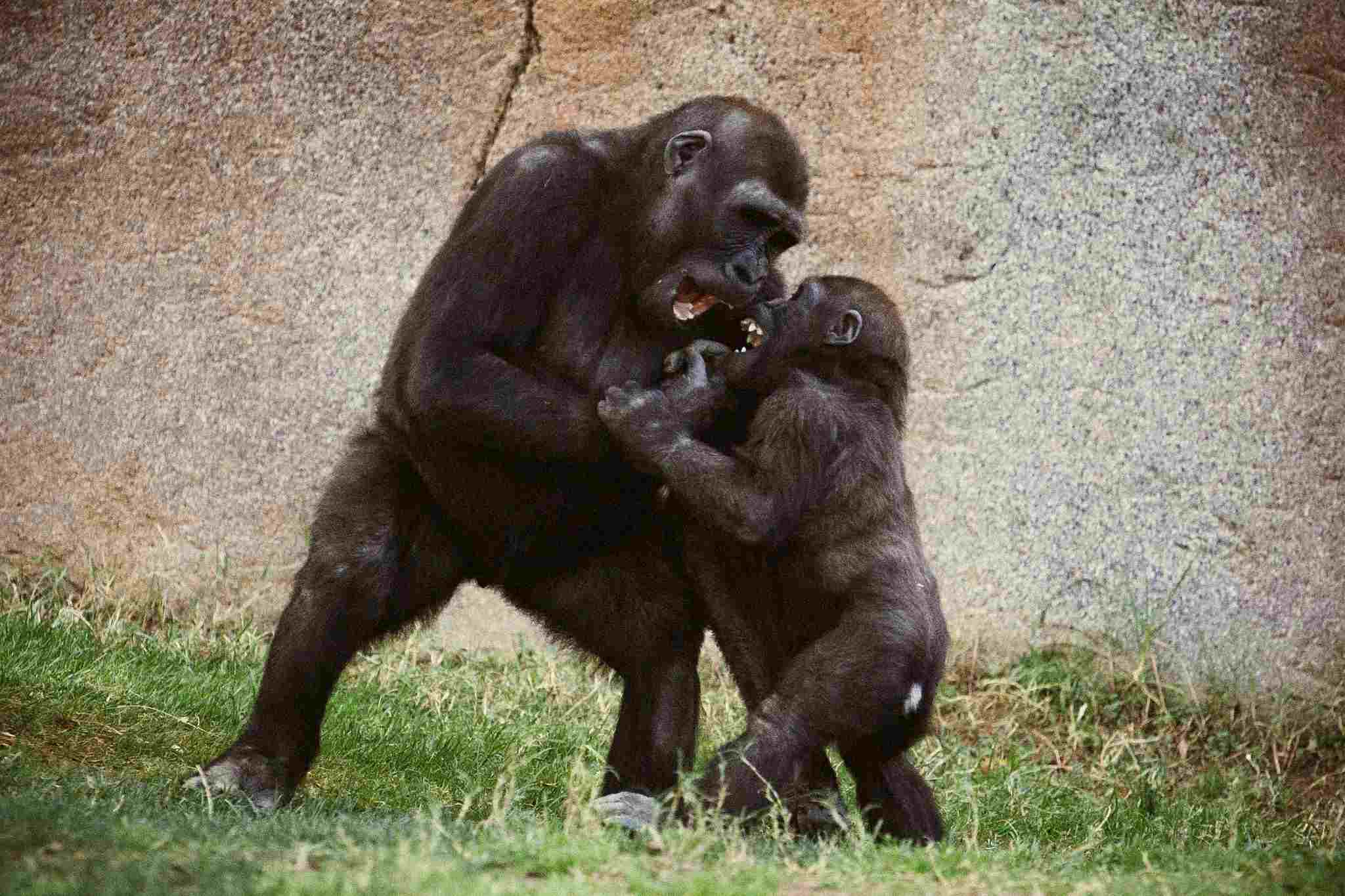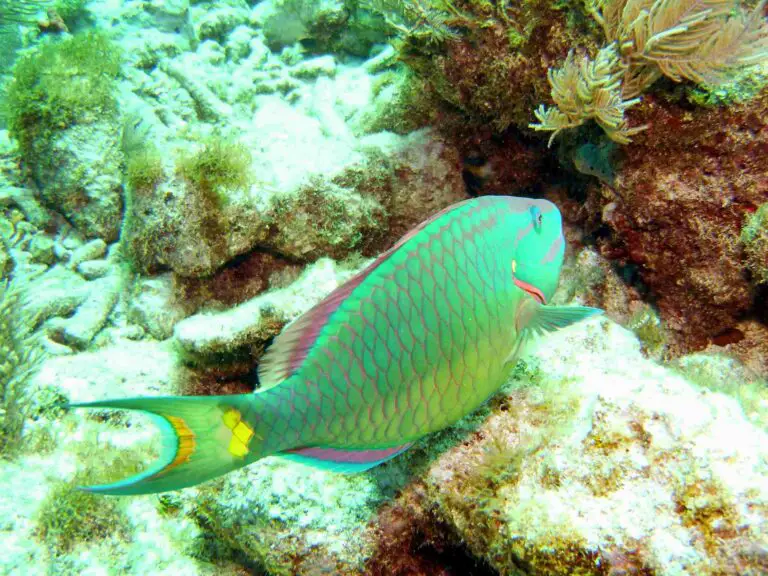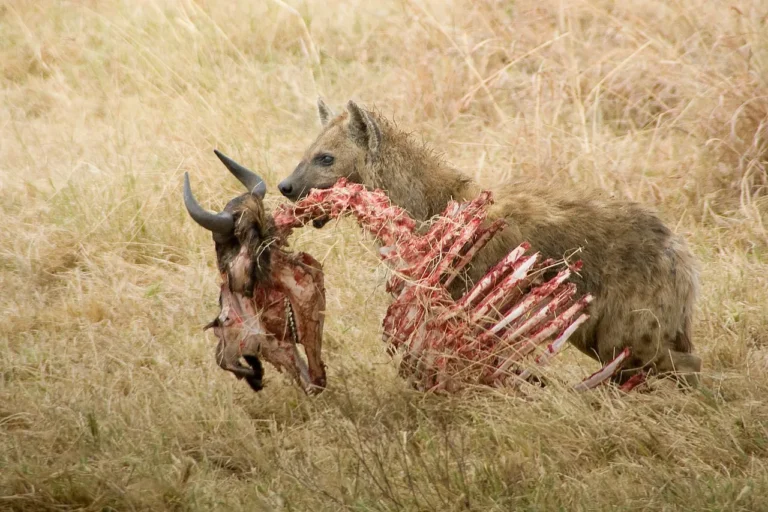Hyena Vs Crocodile Vs Warthog Size, Weight, Ecology Explained
A crocodile’s superior weight and size give it an advantage over a hyena in a fight. With its strong jaws, the crocodile can overpower the hyena, breaking its bones and potentially drowning it.
On the other hand, a hyena can defeat a warthog by utilizing its predatory features, although it is also at risk of injury from the warthog’s tusks. In these confrontations, size and predatory abilities play a crucial role.
Reasons Why a Crocodile Will Win a Hyena in a Fight/Physical Confrontation
I). Superior Weight and Size
One of the main reasons why a crocodile would win in a fight against a hyena is its superior weight and size. Crocodiles are known to be much larger and heavier than hyenas, giving them a significant advantage in physical confrontations.
With their massive bodies, crocodiles have the ability to overpower hyenas and exert their dominance. This size difference allows crocodiles to deliver powerful blows and strikes, making it difficult for hyenas to defend themselves effectively.
II). Larger Mouth and Strong Bite Force
Another factor that contributes to a crocodile’s advantage over a hyena is its larger mouth and strong bite force. Crocodiles have incredibly powerful jaws that can exert immense pressure, capable of crushing bones and causing severe injuries.
With their sharp teeth and formidable bite, crocodiles can inflict serious damage on hyenas, making it challenging for them to retaliate. The combination of a large mouth and strong bite force gives crocodiles a significant edge in a fight against hyenas.
III). Ability to Ambush and Drown Other Animals
Crocodiles are well-known for their ability to ambush and drown their prey, which further enhances their chances of winning in a fight against hyenas. With their stealthy nature and excellent camouflage, crocodiles can surprise unsuspecting hyenas and catch them off guard.
Once a crocodile has captured its prey, it can use its powerful jaws and immense strength to drag the hyena into the water, where it can drown it. This predatory strategy gives crocodiles a distinct advantage over hyenas in physical confrontations.
Therefore, the superior weight and size, larger mouth and strong bite force, and the ability to ambush and drown other animals make crocodiles formidable opponents for hyenas in a fight or physical confrontation.
Reason Why a Hyena Will Win a Warthog in a Fight/Physical Confrontation
I). Predatory Features
Hyenas possess several predatory features that give them an advantage over warthogs in a fight or physical confrontation. One of these features is their exceptional speed and agility.
Hyenas are known for their ability to chase down prey with remarkable speed, making it difficult for warthogs to escape their pursuit. Additionally, hyenas have sharp claws that they can use to latch onto their prey and bring them down.
II). Strength and Endurance
Hyenas are incredibly strong animals, capable of taking down much larger prey than themselves. Their muscular build and powerful limbs allow them to overpower warthogs in a physical confrontation. Furthermore, hyenas have impressive endurance, enabling them to sustain a prolonged chase or fight with a warthog. This stamina gives hyenas an advantage in wearing down their opponents.
III). Adaptability and Hunting Techniques
Hyenas are highly adaptable predators, able to thrive in various habitats and climates. This adaptability allows them to effectively hunt warthogs in different environments.
Hyenas employ a combination of hunting techniques, including cooperative hunting and strategic planning. By working together in groups, hyenas can surround and overwhelm warthogs, increasing their chances of a successful kill.
IV). Powerful Jaws and Teeth
Hyenas possess powerful jaws and sharp teeth that they use to their advantage in a fight against warthogs. Their jaws can deliver bone-crushing bites, capable of inflicting severe injuries on their opponents. With their strong bite force, hyenas can overpower warthogs and disable them, making it difficult for the warthogs to defend themselves effectively.
Therefore, hyenas have predatory features, strength and endurance, adaptability, and powerful jaws and teeth that make them formidable opponents for warthogs in a fight or physical confrontation.
*Hyena Vs Crocodile Size, Weight, Taxonomy
a). Taxonomic Classification
When comparing the taxonomic classification of hyenas and crocodiles, it becomes evident that these two animals belong to different families and orders. Hyenas are classified under the family Hyaenidae and the order Carnivora.
There are four species of hyenas, namely the spotted hyena (Crocuta crocuta), the brown hyena (Hyaena brunnea), the striped hyena (Hyaena hyaena), and the aardwolf (Proteles cristata). On the other hand, crocodiles are classified under the family Crocodylidae and the order Crocodylia. There are several species of crocodiles, including the Nile crocodile (Crocodylus niloticus), the American crocodile (Crocodylus acutus), and the saltwater crocodile (Crocodylus porosus).
Despite their different taxonomic classifications, hyenas and crocodiles share some similarities in terms of their predatory nature and ability to hunt for food. Both animals are carnivorous and have adapted to their respective environments to become efficient hunters.
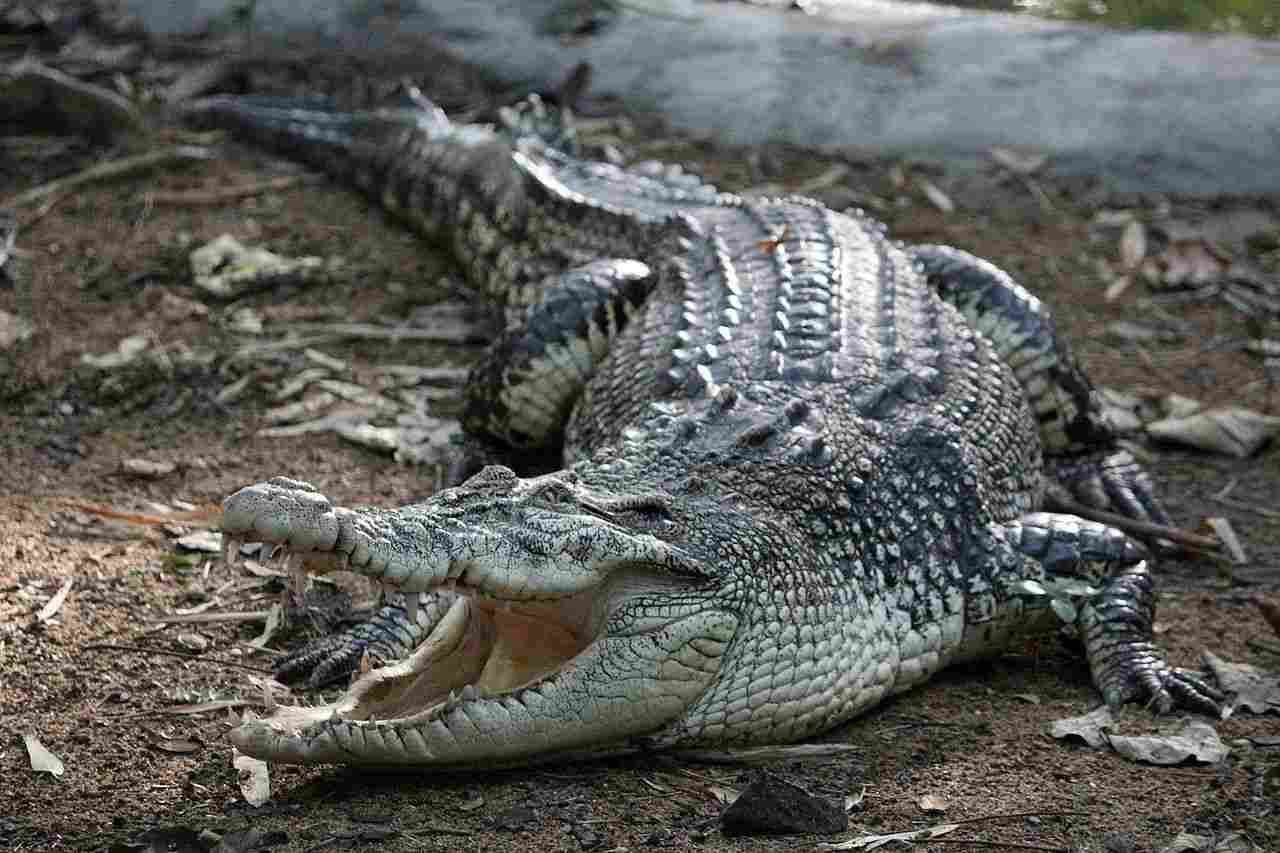
b). Appearance
When it comes to appearance, hyenas and crocodiles have distinct physical characteristics that set them apart. Hyenas have a robust build with a sloping back and powerful forequarters. They have a coarse coat of fur that is usually spotted or striped, depending on the species.
The spotted hyena, for example, has a sandy-colored coat with dark spots, while the striped hyena has a sandy coat with vertical stripes. In contrast, crocodiles have a long and streamlined body with a large head and a powerful tail. They have rough, scaly skin that is usually dark brown or gray, providing excellent camouflage in their aquatic habitats.
c). Size and Weight Comparison
In terms of size and weight, crocodiles are significantly larger and heavier than hyenas. Adult crocodiles can reach lengths of up to 20 feet or more, with the saltwater crocodile being the largest species. They can weigh anywhere between 1,000 to 2,000 pounds. On the other hand, hyenas are relatively smaller, with adult males measuring around 5 to 6 feet in length and weighing between 110 to 190 pounds. Female hyenas are slightly larger, measuring around 6 to 7 feet in length and weighing between 120 to 200 pounds.
d). Who Will Win in a Fight Between Them
When it comes to a hypothetical fight between a hyena and a crocodile, it is important to consider their respective strengths and weaknesses. Crocodiles are known for their powerful jaws and immense bite force, which they use to capture and kill their prey. With their sharp teeth and strong bite, crocodiles can easily overpower smaller animals, including hyenas.
However, hyenas are highly intelligent and adaptable predators. They have a strong bite force themselves and are capable of inflicting serious injuries on their opponents. In a fight, a hyena’s agility and endurance could potentially give it an advantage over a crocodile, especially if the fight takes place on land where the hyena is more comfortable.
e). Key Differences and Similarities
In terms of intelligence, hyenas are known for their problem-solving abilities and complex social structures. They exhibit cooperative hunting behaviors and communicate through a wide range of vocalizations. Crocodiles, on the other hand, are more solitary creatures and rely on their physical attributes for survival.
In terms of habitats, hyenas are found in a variety of environments, including savannas, grasslands, and woodlands. They are adaptable and can thrive in both arid and humid regions. Crocodiles, on the other hand, are primarily aquatic reptiles and are found in freshwater habitats such as rivers, lakes, and swamps. They are well-suited to their aquatic environments and are excellent swimmers.
Both hyenas and crocodiles are dangerous to humans, although the level of danger varies depending on the circumstances. Hyenas are known to scavenge from human settlements and can pose a threat to livestock and even humans in certain situations. Crocodiles, on the other hand, are known to be ambush predators and can attack humans who venture too close to their habitats, especially during feeding or breeding seasons.
Therefore, while hyenas and crocodiles have distinct differences in terms of their taxonomic classification, appearance, size, and habitats, they are both formidable predators in their own right. In a hypothetical fight between the two, the outcome would depend on various factors such as the location of the fight and the specific circumstances.
*Hyena Vs Warthog Size, Weight, Taxonomy
a). Taxonomic Classification
When comparing the taxonomic classification of hyenas and warthogs, it becomes evident that these two animals belong to different families and orders. Hyenas are classified under the family Hyaenidae and the order Carnivora.
There are four species of hyenas, namely the spotted hyena (Crocuta crocuta), the brown hyena (Hyaena brunnea), the striped hyena (Hyaena hyaena), and the aardwolf (Proteles cristata). On the other hand, warthogs are classified under the family Suidae and the order Artiodactyla. There are two species of warthogs, namely the common warthog (Phacochoerus africanus) and the desert warthog (Phacochoerus aethiopicus).
While hyenas and warthogs belong to different families and orders, they do share some similarities in terms of their physical characteristics and ecological roles. Both animals are adapted to their respective environments and have unique features that help them survive and thrive.
b). Appearance
When it comes to appearance, hyenas and warthogs have distinct physical characteristics that set them apart. Hyenas have a robust build with a sloping back and powerful forequarters. They have a coarse coat of fur that is usually spotted or striped, depending on the species.
The spotted hyena, for example, has a sandy-colored coat with dark spots, while the striped hyena has a sandy coat with vertical stripes. In contrast, warthogs have a compact and sturdy body with a large head and two pairs of tusks. They have sparse hair on their bodies and a mane of longer hair along their backs. Warthogs also have facial warts, which are thickened skin patches that provide protection during fights.
c). Size and Weight Comparison
In terms of size and weight, hyenas are generally larger and heavier than warthogs. Adult hyenas can measure around 5 to 6 feet in length and stand about 2.5 to 3 feet tall at the shoulder. They can weigh between 110 to 200 pounds, with females being slightly larger than males.
On the other hand, warthogs are relatively smaller, with adult males measuring around 3 to 4 feet in length and standing about 2 to 3 feet tall at the shoulder. They can weigh between 120 to 250 pounds, with males being larger than females.
d). Who Will Win in a Fight Between Them
When it comes to a hypothetical fight between a hyena and a warthog, it is important to consider their respective strengths and weaknesses. Hyenas are known for their powerful jaws and strong bite force, which they use to capture and kill their prey.
With their sharp teeth and strong bite, hyenas can easily overpower smaller animals, including warthogs. However, warthogs are not defenseless. They have formidable tusks that they use for defense and to ward off predators. Warthogs are also known for their speed and agility, which allows them to escape from potential threats.
In a fight between a hyena and a warthog, the outcome would depend on various factors such as the size and strength of the individuals involved, as well as the specific circumstances of the encounter. While hyenas have the advantage in terms of size and bite force, warthogs have their tusks and agility to rely on. It is difficult to determine a clear winner in such a confrontation, as it would depend on the specific dynamics of the encounter.
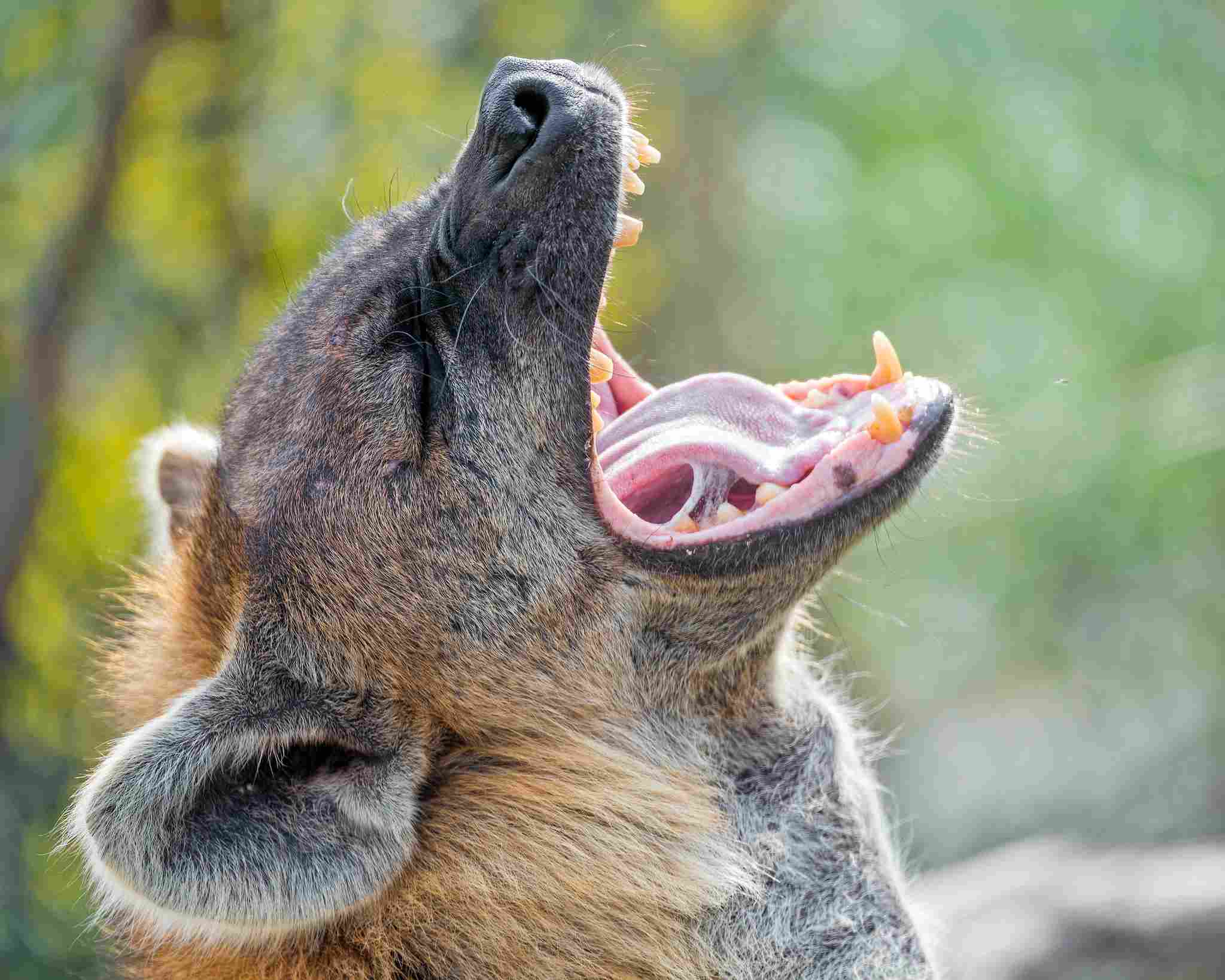
e). Key Differences and Similarities
In terms of intelligence, hyenas are known for their problem-solving abilities and complex social structures. They exhibit cooperative hunting behaviors and communicate through a wide range of vocalizations. Warthogs, on the other hand, are not as socially complex as hyenas and are more solitary in nature. They rely on their keen senses and instincts to survive in their environments.
In terms of habitats, hyenas are found in a variety of environments, including savannas, grasslands, and woodlands. They are adaptable and can thrive in both arid and humid regions. Warthogs, on the other hand, are primarily found in grasslands and savannas, where they can find suitable food sources such as grass and roots.
Both hyenas and warthogs can be dangerous to humans, although the level of danger varies depending on the circumstances. Hyenas are known to scavenge from human settlements and can pose a threat to livestock and even humans in certain situations. Warthogs, on the other hand, are generally not aggressive towards humans unless they feel threatened or cornered. However, it is important to exercise caution and maintain a safe distance from both animals in the wild.
Therefore, while hyenas and warthogs have distinct differences in terms of their taxonomic classification, appearance, size, and habitats, they are both fascinating animals with unique adaptations.
Conclusion
In conclusion, this article has explored the size, weight, and taxonomy of hyenas, crocodiles, and warthogs. We have discussed the physical characteristics, appearance, and ecological roles of these animals. While hyenas and warthogs belong to different families and orders, they share some similarities in terms of their adaptations and survival strategies.
In a hypothetical fight between a hyena and a warthog, the outcome would depend on various factors such as size, strength, and specific circumstances. Both animals have notable features and play important roles in their respective ecosystems. Overall, hyenas, crocodiles, and warthogs are distinctive animals with distinct characteristics and behaviors.
